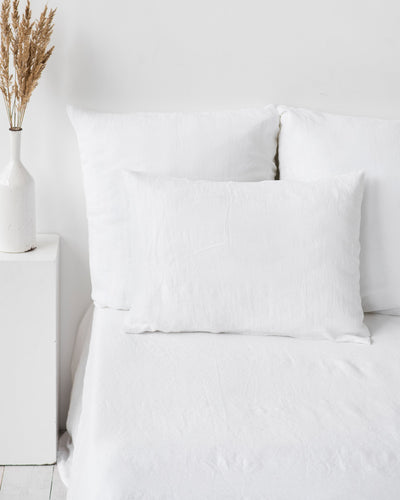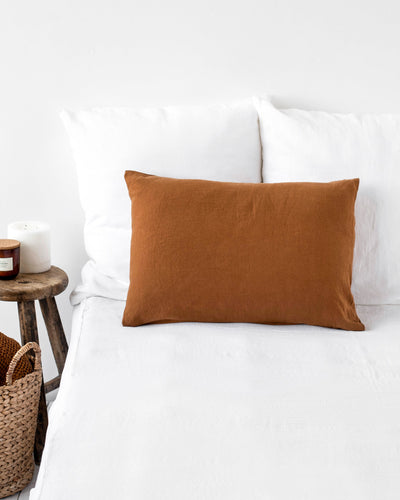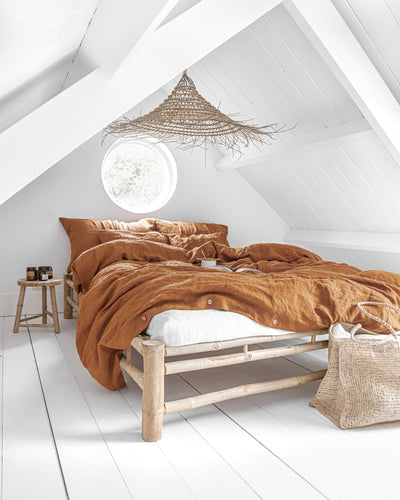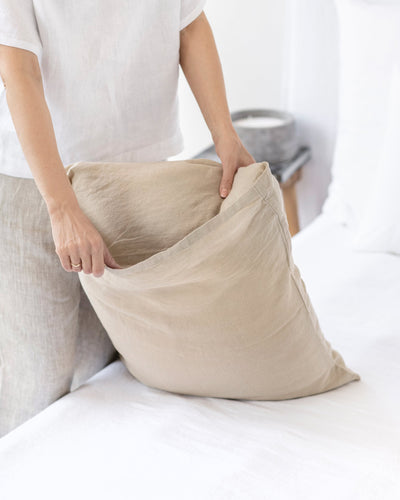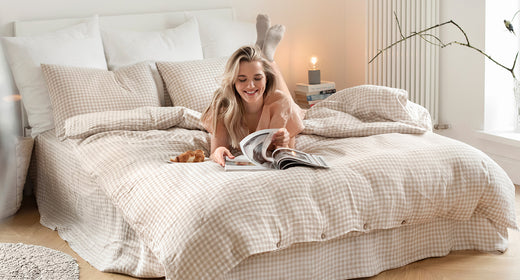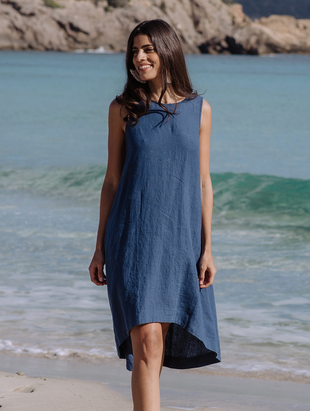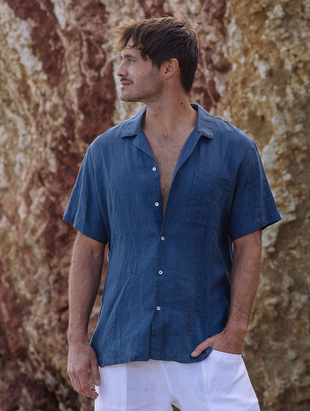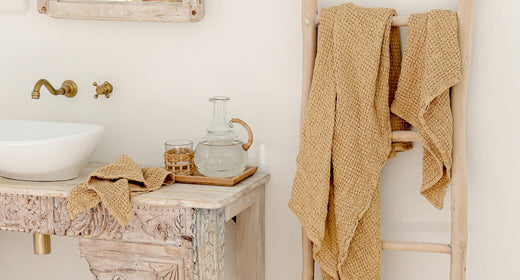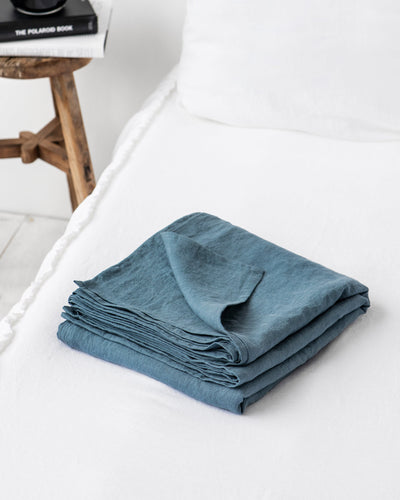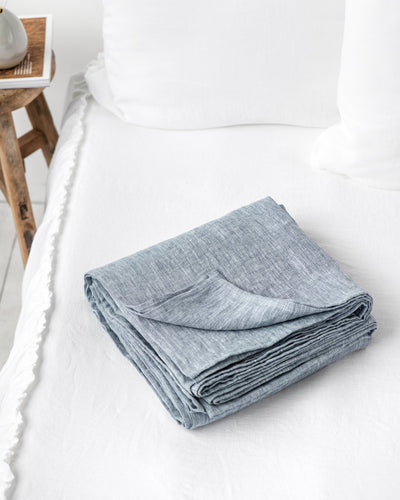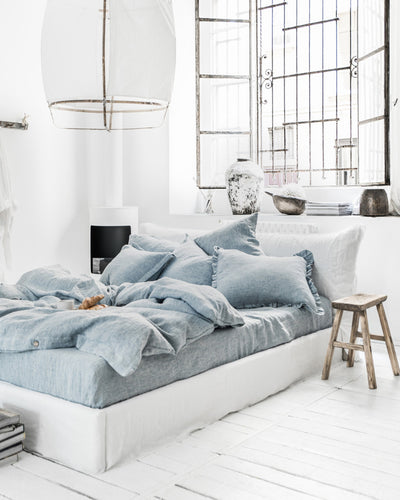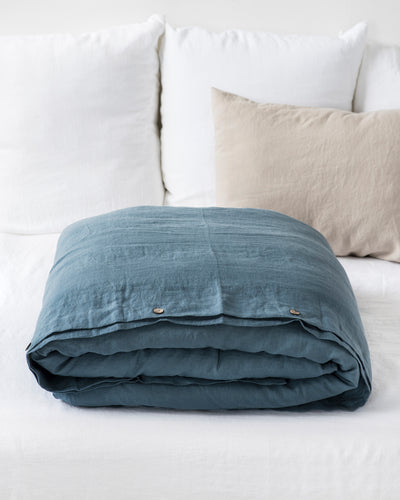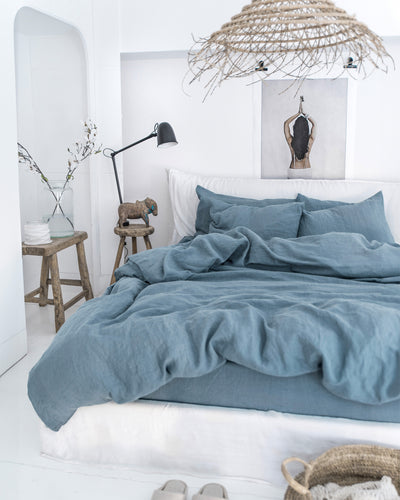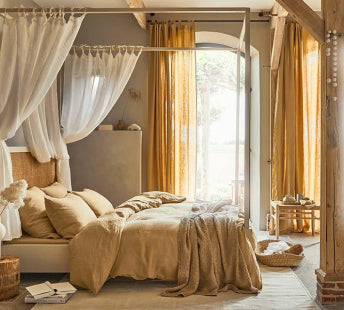Bedding Shopper's Guide: Linen vs. Percale vs. Sateen
There was a time when the only criteria for a perfect bedding set were having enchanted castles or racing cars printed on it. But now, as we look for something more age-appropriate, it’s easy to get lost in the puzzling terminology and the sheer vastness of the bedding industry.
You have to think of the fabric, the weave, the thread count… It’s so confusing! That is why we’re here to break it down for you: we’ll be looking at the most common types of bedding – linen, percale, and sateen – and make our recommendations based on their properties and the different sleep habits you may have.
What is linen?
Linen, derived from the flax plant, is a natural plant fiber that is proclaimed to be the strongest of its kind in the whole world. Extra durable, breathable, and moisture-wicking, linen has earned the love and respect of sleepers throughout centuries and all around the world.
Linen fibers are rather thick and produce stiffer yarns. This, in return, contributes to linen’s crisp hand (the way a fabric feels upon touching). Due to its wrinkly texture, linen creates a casual, lived-in look and works well in many different interiors.

What is percale and what is sateen?
To start off, both percale and sateen are made from cotton. They are different types of weave and thus have distinct textures. Cotton itself is also a natural fiber derived from the cotton plant, which is more widely grown than linen and thus a little bit cheaper. However, organic cotton, Egyptian cotton or Supima cotton are incredibly high quality and can easily compete with linen.
What makes cotton so lovable is that cotton fibers are highly versatile and can be spun into thick or fine yarns. That’s why cotton exists in many different forms, from smooth percale to silky sateen, stretchy jersey, and soft flannel. It is also sometimes mixed with polyester to make a cheaper alternative to 100% cotton bedding.
So which one’s right for you?
We all have unique sleeping habits: some like it on the cooler side, others want to feel warm and cozy, and some try to strike a balance by dipping their feet outside the covers. Based on these factors, here’s what you should consider when purchasing new bedding.
- Out of the three, linen should satisfy the biggest variety of sleepers.
Thanks to its thermoregulating properties, linen stays cool in the summer and traps warmth from your body in the colder months. It is also highly breathable and moisture-wicking, meaning you’re unlikely to sweat when sleeping in linen bedding. Sure, even pre-washed, it can feel a little coarser than cotton, but it gets softer with every wash without losing shape or disintegrating.

- Percale is perfect for those who prefer to stay cool at night
Percale is a traditional one-yarn-over and one-yarn under weave. It’s tight and flat giving percale bedding a crisp hand and a matte finish. The yarn isn’t as thick, so even when woven pretty tightly together, it feels lightweight and leaves room for air to circulate. If you tend to sweat during sleep or live in a warmer climate, percale is a good choice.
- Sateen is perfect for those who prefer to stay warm at night
Sateen is a one-yarn-under and three-yarn-over weave. By exposing more thread surface, sateen gains its signature buttery feel and silky, luminous look. Although similarly looking, sateen shouldn’t be confused with satin, which is made from silk fibers. Sateen is thicker than percale and lies heavier on the body, so if you tend to get cold at night, go with sateen.
NOTE: The most common misconception with cotton bedding (both percale and sateen) is that higher thread count means higher quality. Thread count defines the number of woven threads in one square inch of fabric. Somewhat representative, thread count by itself doesn’t fully define the quality of the product. When choosing cotton bedding, look at the country of origin, the yarning technique, the fiber length. If you still need a guiding number, anything in a 400-600 range should do the trick.
 United States
United States
